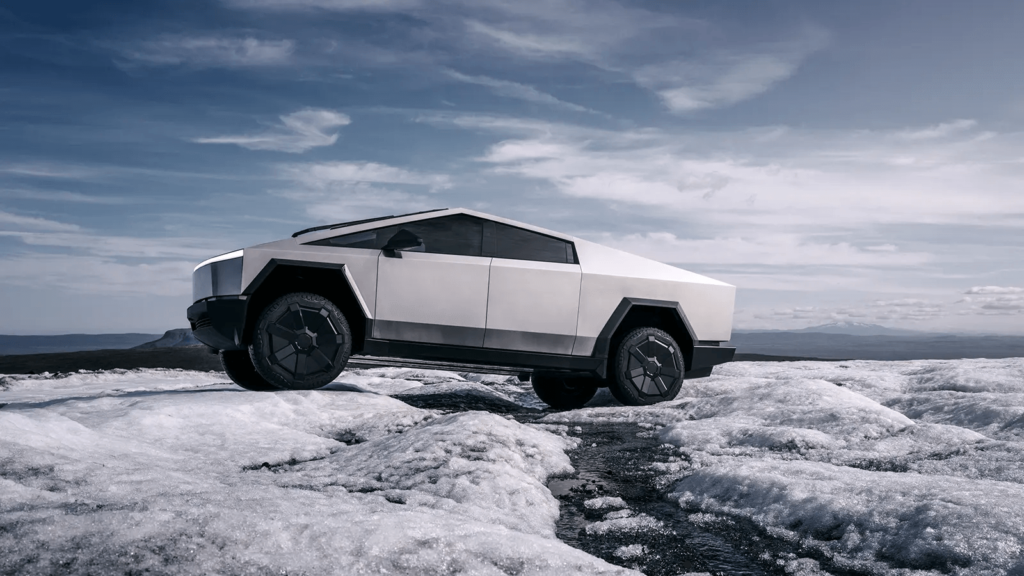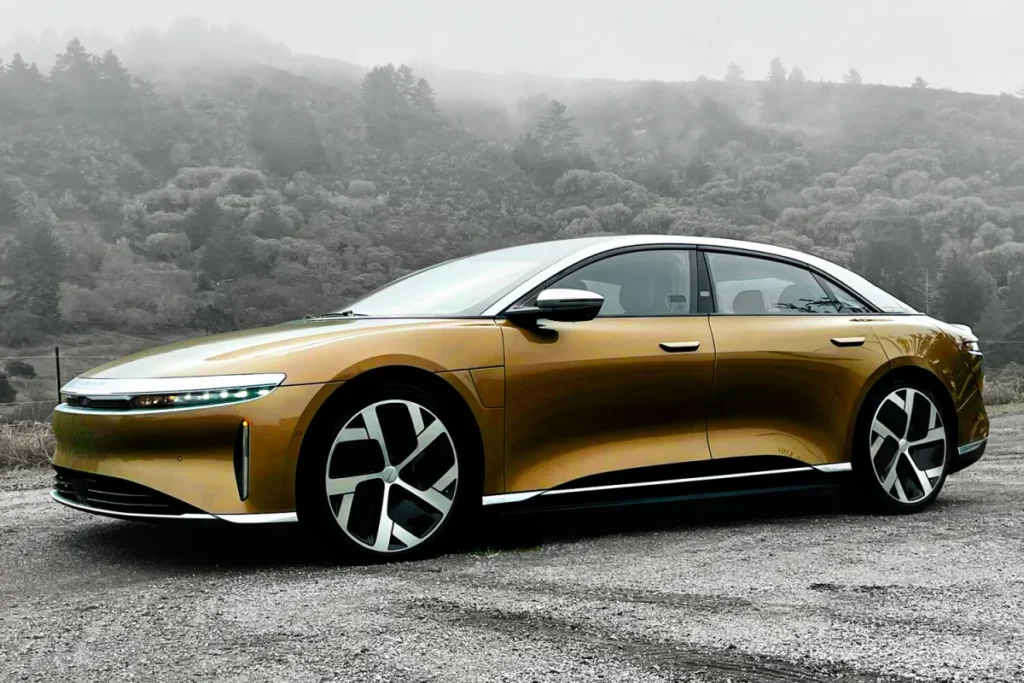The future of electric vehicles in 2024 looks incredibly promising
Electric vehicles (EVs) have taken the world by storm, transforming how we think about transportation and sustainability. With the global push toward reducing carbon emissions, governments, automakers, and consumers are embracing EV technology like never before.
As we step into 2024, the future of electric vehicles promises to be more exciting, accessible, and innovative. Here’s a glimpse of what we can expect in the year ahead.

Xiaomi’s first electric vehicle, the SU7
1. More Affordable EV Options
While electric vehicles were once seen as a luxury, 2024 is set to bring a wave of more affordable EVs to the market.
Several automakers are launching budget-friendly electric models, making the transition to electric driving easier for a wider range of consumers.
Advances in battery technology and mass production are driving down costs, allowing car manufacturers to offer EVs at prices that can compete with traditional gas-powered vehicles.
Expect brands like Tesla, Ford, Hyundai, and even newer companies like Rivian and Lucid to unveil models with price tags that will appeal to budget-conscious buyers.

2. Longer Range and Faster Charging
One of the biggest hurdles for EV adoption has been range anxiety—the fear that an electric vehicle won’t have enough battery power to reach its destination.
However, 2024 will see significant improvements in EV range, thanks to innovations in battery technology.
New EVs will boast ranges exceeding 400-500 miles on a single charge, making long road trips more feasible.
In addition, fast-charging infrastructure is expanding rapidly, with companies like Tesla (Supercharger network) and Electrify America investing in stations that can recharge an EV in as little as 15-30 minutes.
Solid-state batteries, which are lighter and charge faster than conventional lithium-ion batteries, are also expected to begin rolling out in some models by late 2024.

3. Government Incentives and Regulations
Governments around the world are ramping up their efforts to promote the use of electric vehicles. In 2024, we can expect more incentives for buyers, including tax credits, rebates, and subsidies.
Countries like the United States, Germany, and China are leading the charge with policies designed to make EVs more appealing and affordable.
Moreover, stricter regulations on emissions and bans on the sale of new gasoline and diesel vehicles are starting to take effect in certain regions, encouraging consumers to switch to electric. Cities may also expand low-emission zones, further nudging drivers toward EVs.
4. Expansion of Charging Infrastructure
The rapid expansion of EV charging infrastructure is crucial for the growth of the EV market.
In 2024, we will see a dramatic increase in the number of charging stations globally, making EV ownership more convenient than ever.
Many governments and private companies are investing heavily in both urban and rural areas to ensure that no EV driver has to worry about where to charge their vehicle
Major players in the charging space, such as ChargePoint, EVgo, and Tesla’s Supercharger network, are working on expanding ultra-fast charging stations to cut down charging times and make long-distance EV travel more accessible.

1. More Affordable EV Options
While electric vehicles were once seen as a luxury, 2024 is set to bring a wave of more affordable EVs to the market. Several automakers are launching budget-friendly electric models, making the transition to electric driving easier for a wider range of consumers. Advances in battery technology and mass production are driving down costs, allowing car manufacturers to offer EVs at prices that can compete with traditional gas-powered vehicles.
Expect brands like Tesla, Ford, Hyundai, and even newer companies like Rivian and Lucid to unveil models with price tags that will appeal to budget-conscious buyers.

2. Longer Range and Faster Charging
One of the biggest hurdles for EV adoption has been range anxiety—the fear that an electric vehicle won’t have enough battery power to reach its destination. However, 2024 will see significant improvements in EV range, thanks to innovations in battery technology.
New EVs will boast ranges exceeding 400-500 miles on a single charge, making long road trips more feasible. In addition, fast-charging infrastructure is expanding rapidly, with companies like Tesla (Supercharger network) and Electrify America investing in stations that can recharge an EV in as little as 15-30 minutes. Solid-state batteries, which are lighter and charge faster than conventional lithium-ion batteries, are also expected to begin rolling out in some models by late 2024.
3. Government Incentives and Regulations
Governments around the world are ramping up their efforts to promote the use of electric vehicles. In 2024, we can expect more incentives for buyers, including tax credits, rebates, and subsidies. Countries like the United States, Germany, and China are leading the charge with policies designed to make EVs more appealing and affordable.
Moreover, stricter regulations on emissions and bans on the sale of new gasoline and diesel vehicles are starting to take effect in certain regions, encouraging consumers to switch to electric. Cities may also expand low-emission zones, further nudging drivers toward EVs.
4. Expansion of Charging Infrastructure
The rapid expansion of EV charging infrastructure is crucial for the growth of the EV market. In 2024, we will see a dramatic increase in the number of charging stations globally, making EV ownership more convenient than ever. Many governments and private companies are investing heavily in both urban and rural areas to ensure that no EV driver has to worry about where to charge their vehicle.
Major players in the charging space, such as ChargePoint, EVgo, and Tesla’s Supercharger network, are working on expanding ultra-fast charging stations to cut down charging times and make long-distance EV travel more accessible.
5. Autonomous and Smart Features
Electric vehicles are not just about zero emissions—they’re also at the forefront of smart technology. In 2024, expect to see significant advancements in autonomous driving features.
EVs are increasingly equipped with Level 3 and Level 4 autonomous capabilities, allowing for hands-free driving in certain conditions.
Additionally, EVs will continue to integrate with smart ecosystems, allowing users to control their vehicles remotely via apps, schedule charging times for off-peak hours, and even connect their vehicles to home energy systems for more efficient energy use.
Over-the-air (OTA) updates will also allow EVs to receive software improvements and new features without needing to visit a service center.
6. Commercial Electric Vehicles and Fleets
While personal electric vehicles have been gaining popularity, 2024 will be a big year for the electrification of commercial fleets.
Companies like Amazon, UPS, and Walmart are investing in electric delivery vehicles to reduce their carbon footprints and cut operational costs.
Electric trucks, vans, and buses will become more common on the road, especially in urban areas where short-range driving is typical.
This shift will also help improve air quality in cities, reduce noise pollution, and create a more sustainable logistics network.
7. Innovations in Vehicle-to-Grid (V2G) Technology
One of the most exciting developments in the EV space is Vehicle-to-Grid (V2G) technology.
This allows EVs to not only charge from the grid but also send power back to it during peak demand times. In 2024, V2G technology is expected to become more widespread, turning EVs into mobile energy storage units.
This will benefit both EV owners and the power grid, as drivers could potentially earn money by selling excess energy back to the grid, while utilities can better manage energy demand and reduce reliance on fossil fuels.
8. Luxury Electric Vehicles Entering the Market
2024 will also see an influx of high-end luxury EVs that blend cutting-edge technology with premium design.
Brands like Porsche, BMW, Mercedes-Benz, and Lucid Motors are launching electric models that not only offer high performance but also redefine the concept of luxury in the automotive world.
These vehicles will offer features like impressive acceleration, opulent interiors, and the latest in infotainment and driver-assistance technologies.
For those looking to combine sustainability with luxury, these new entries into the EV market will be hard to resist.
9. Focus on Sustainability Beyond Emissions
Beyond reducing tailpipe emissions, automakers are increasingly focusing on making the entire lifecycle of an electric vehicle more sustainable.
In 2024, expect more carmakers to use recycled materials for their vehicles’ interiors and components, as well as commit to renewable energy sources for manufacturing.
Some companies are even exploring ways to recycle and reuse EV batteries at the end of their life cycles, reducing the environmental impact of battery disposal and mining.
10. Increased Competition in the EV Market
With more automakers entering the EV market, competition is set to heat up in 2024.
This means consumers will have more options than ever before, from budget-friendly compact cars to high-performance luxury vehicles.
Increased competition will also drive innovation, leading to better technology, lower prices, and improved features across the board.
The future of electric vehicles in 2024 looks incredibly promising, with advancements in range, affordability, and charging infrastructure making EVs more accessible to the masses.
As governments push for more sustainable transportation and automakers continue to innovate, we are on the cusp of a new era in automotive history—one that is cleaner, smarter, and more connected.
Whether you’re an early adopter or just starting to consider an EV, 2024 will be an exciting year for electric vehicles!

